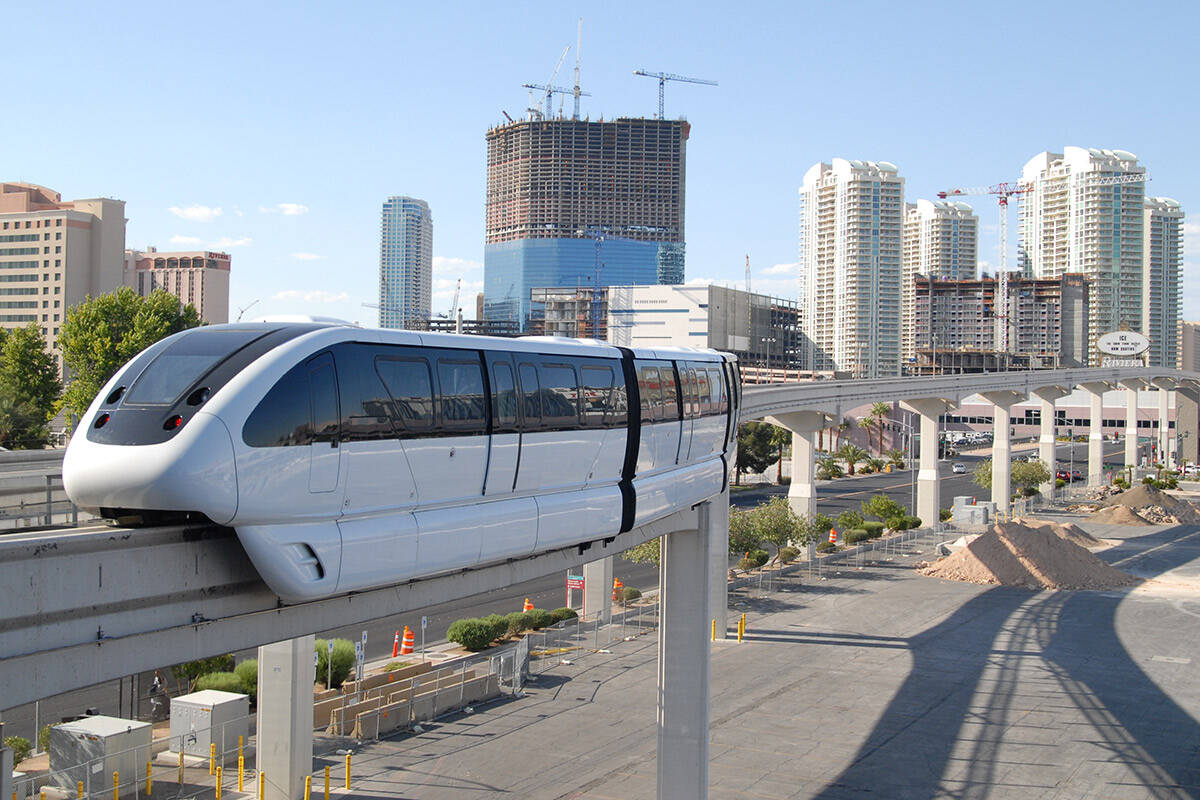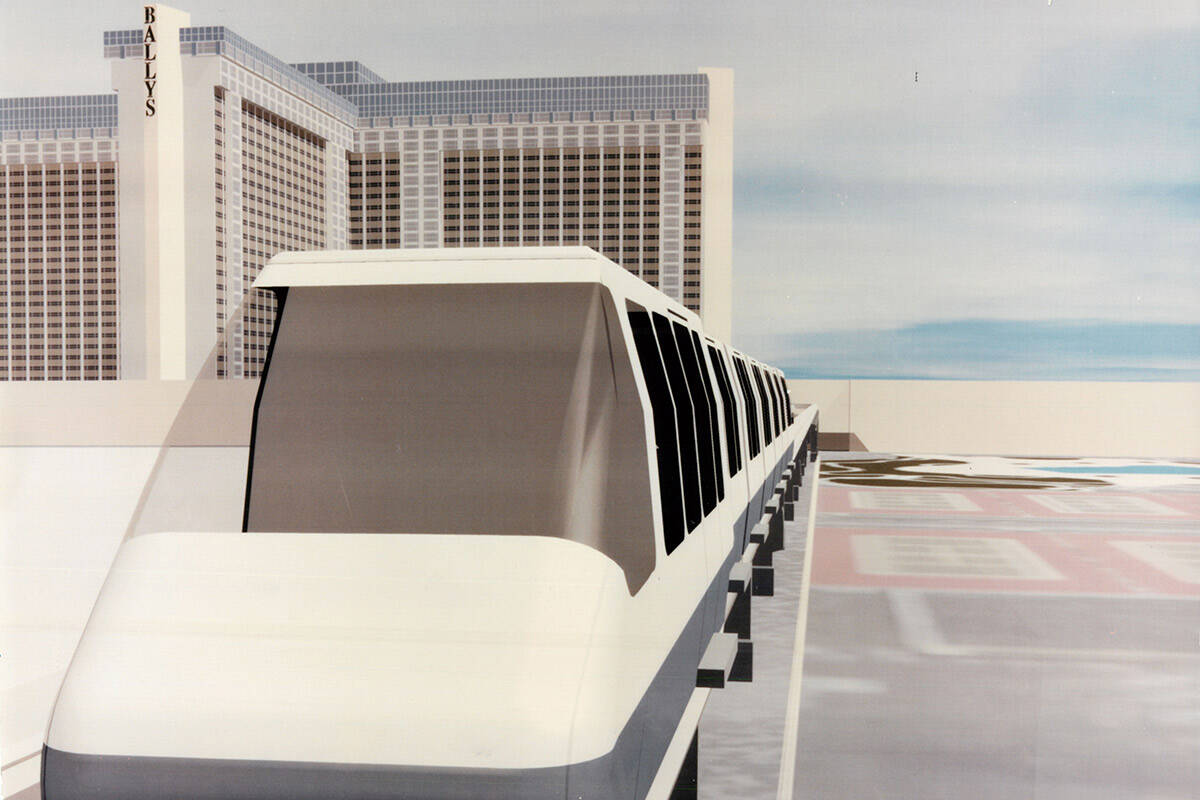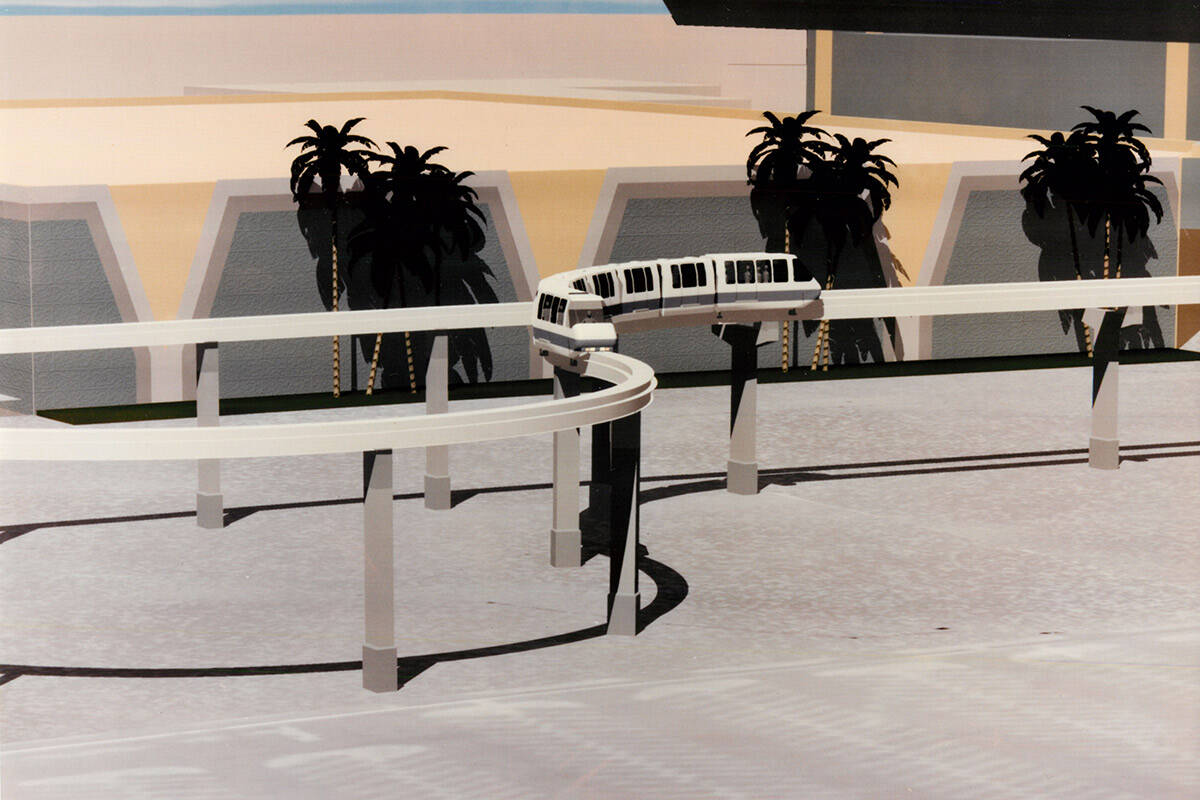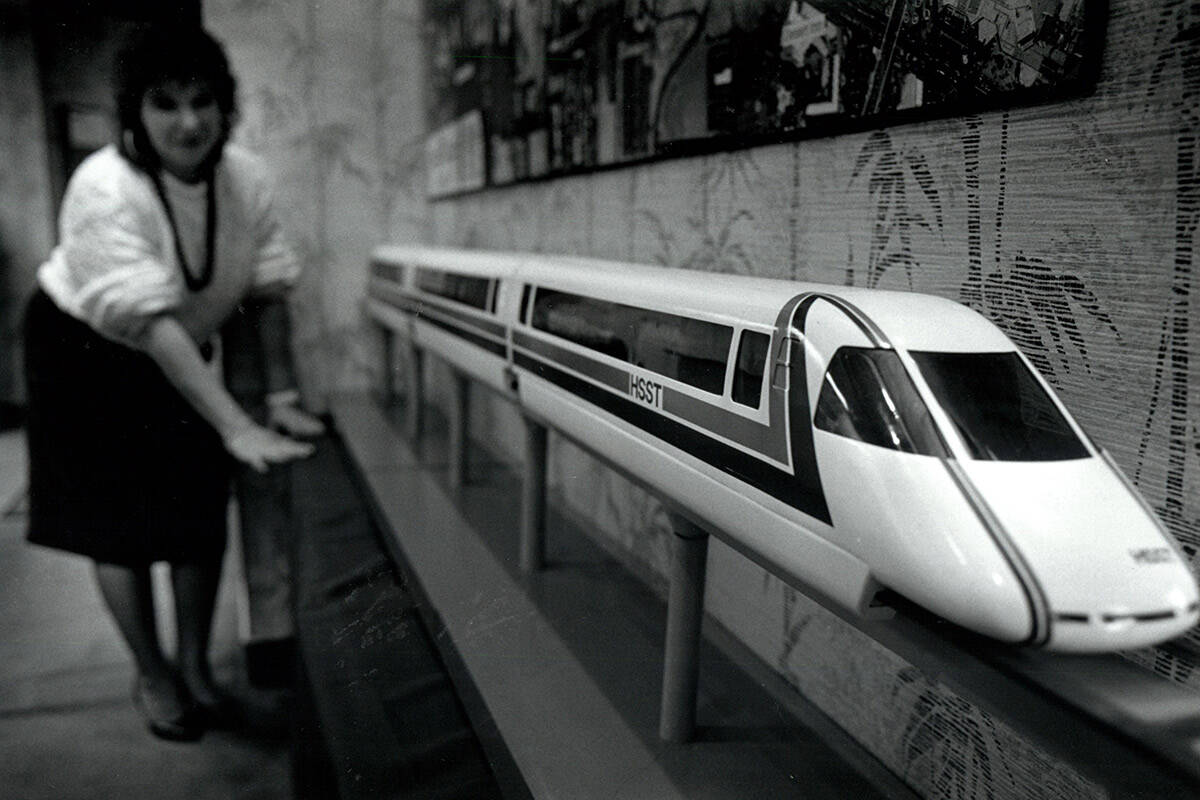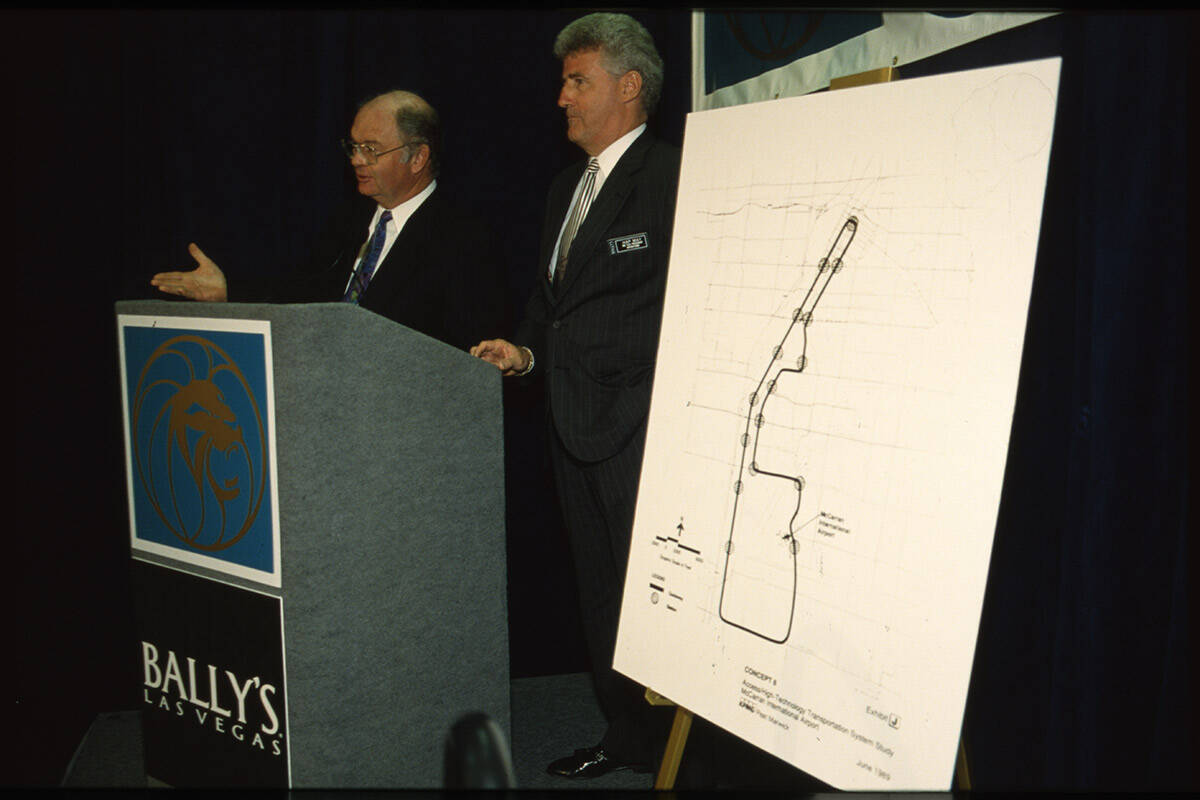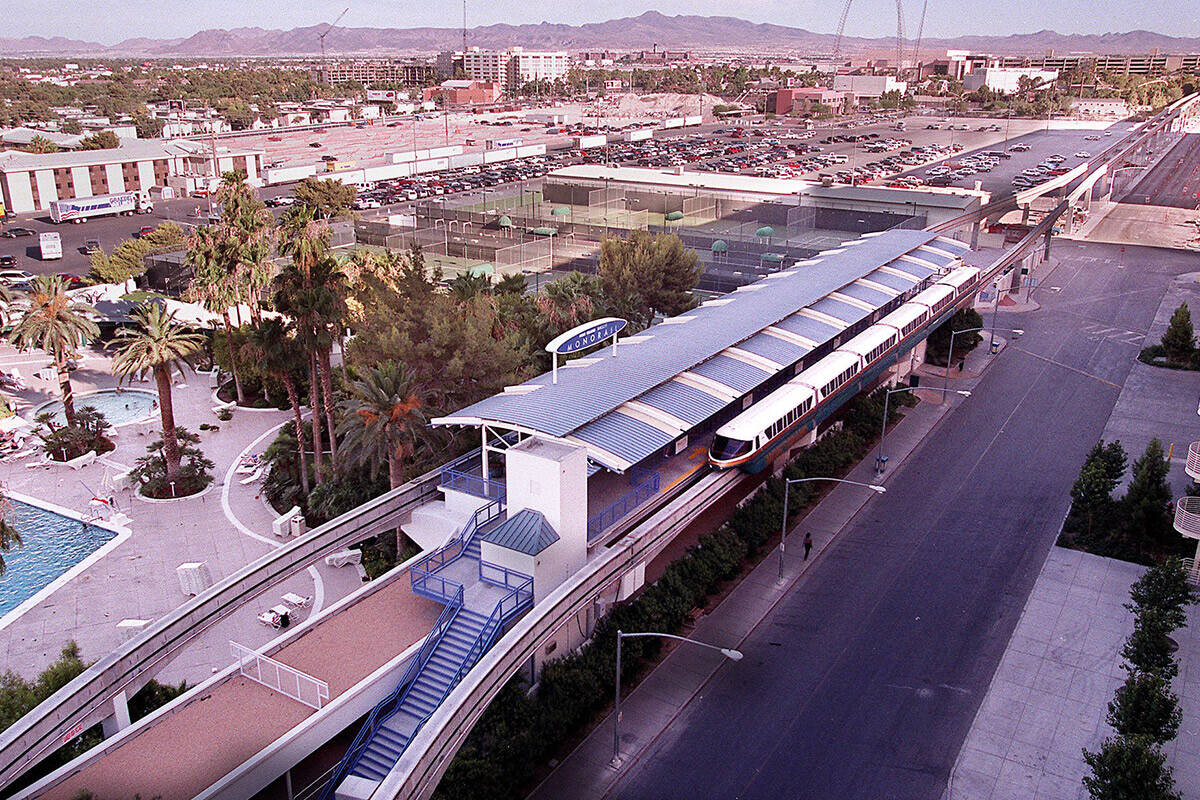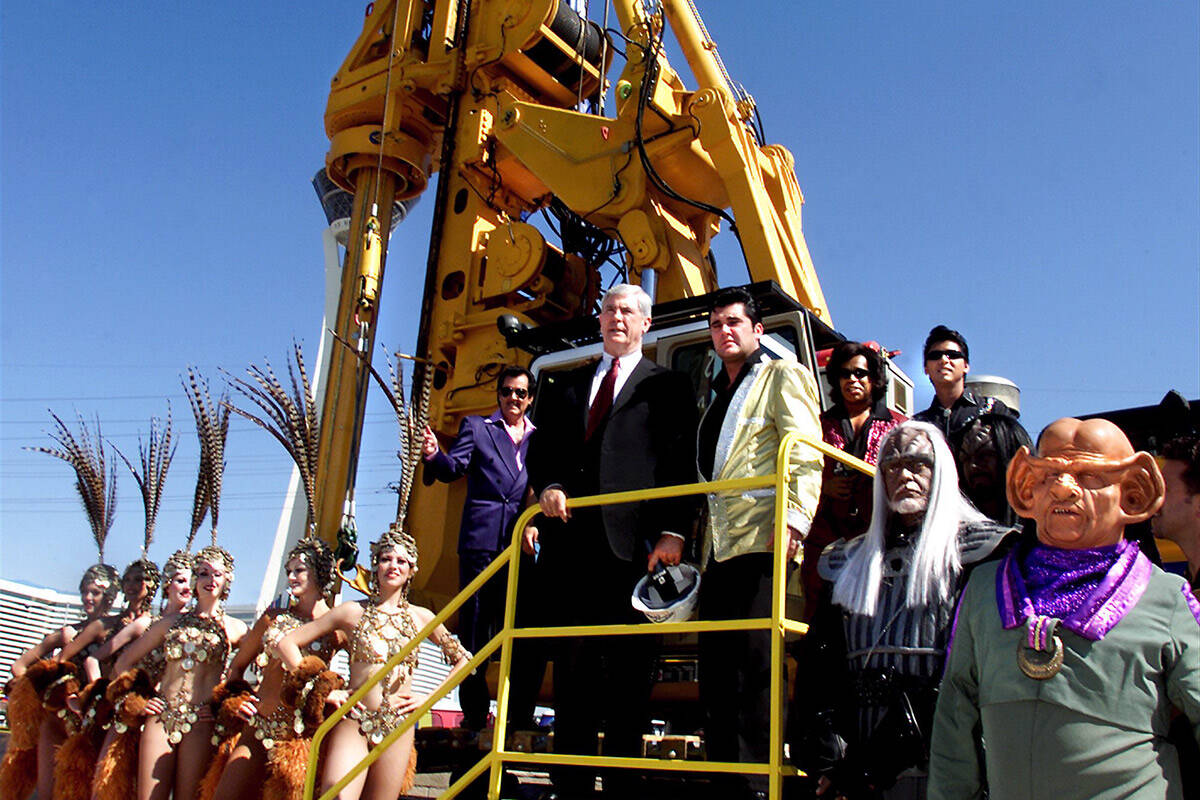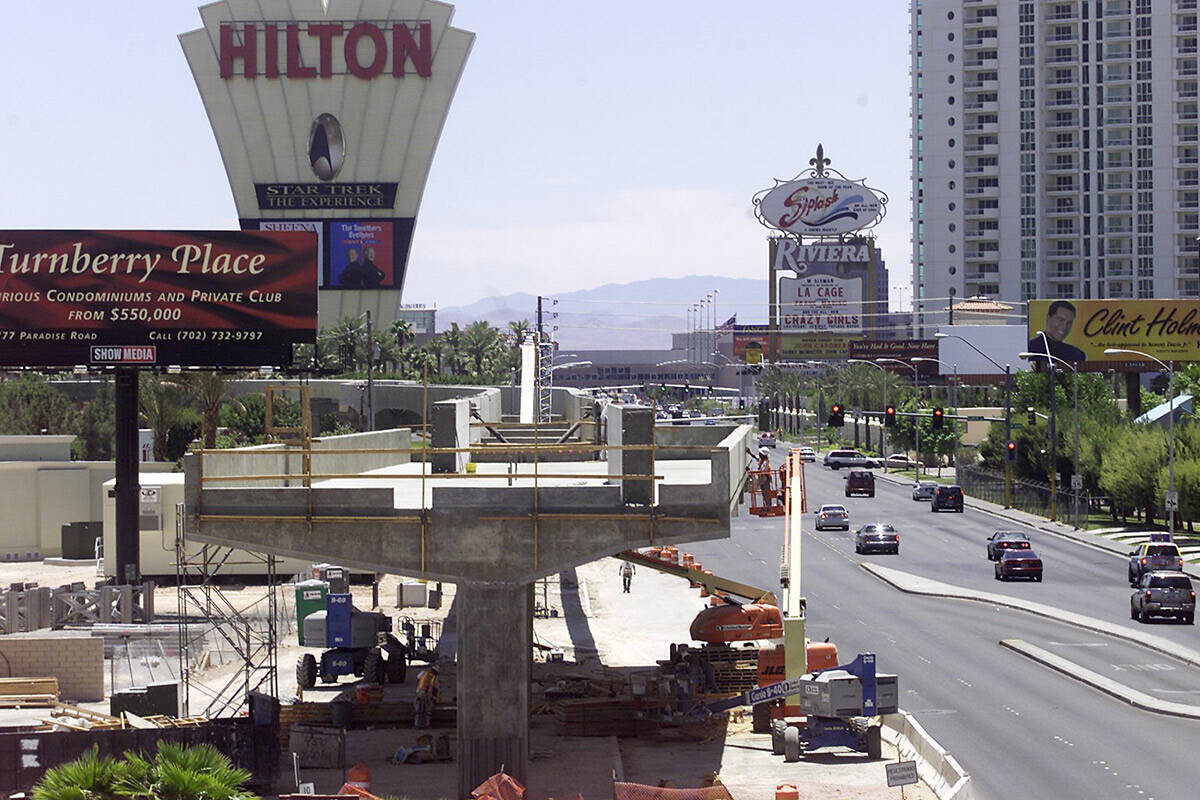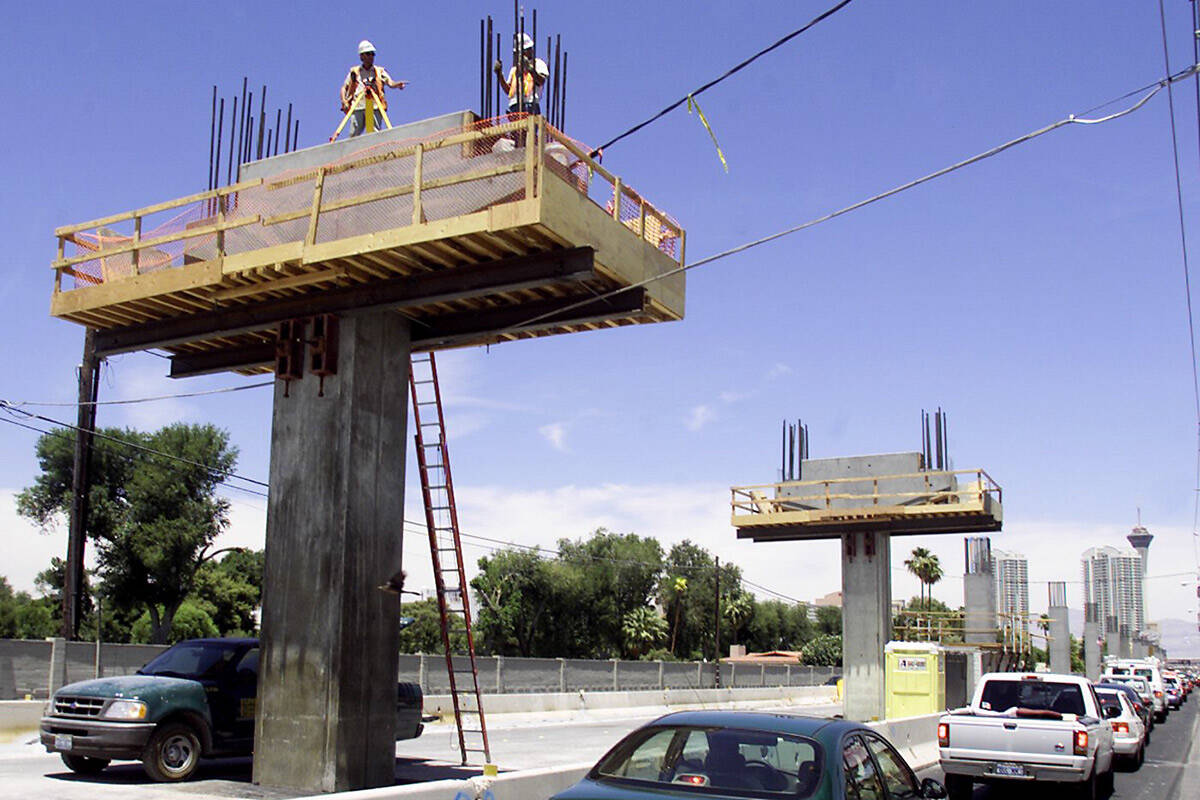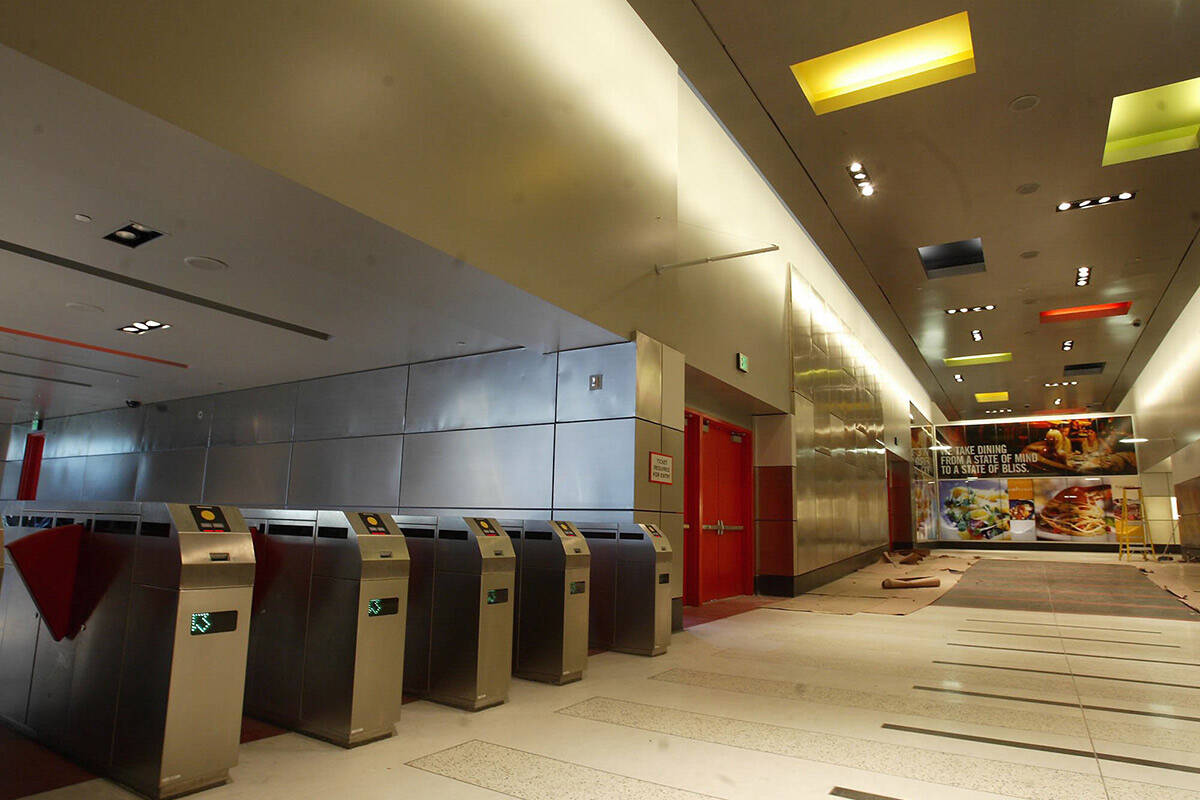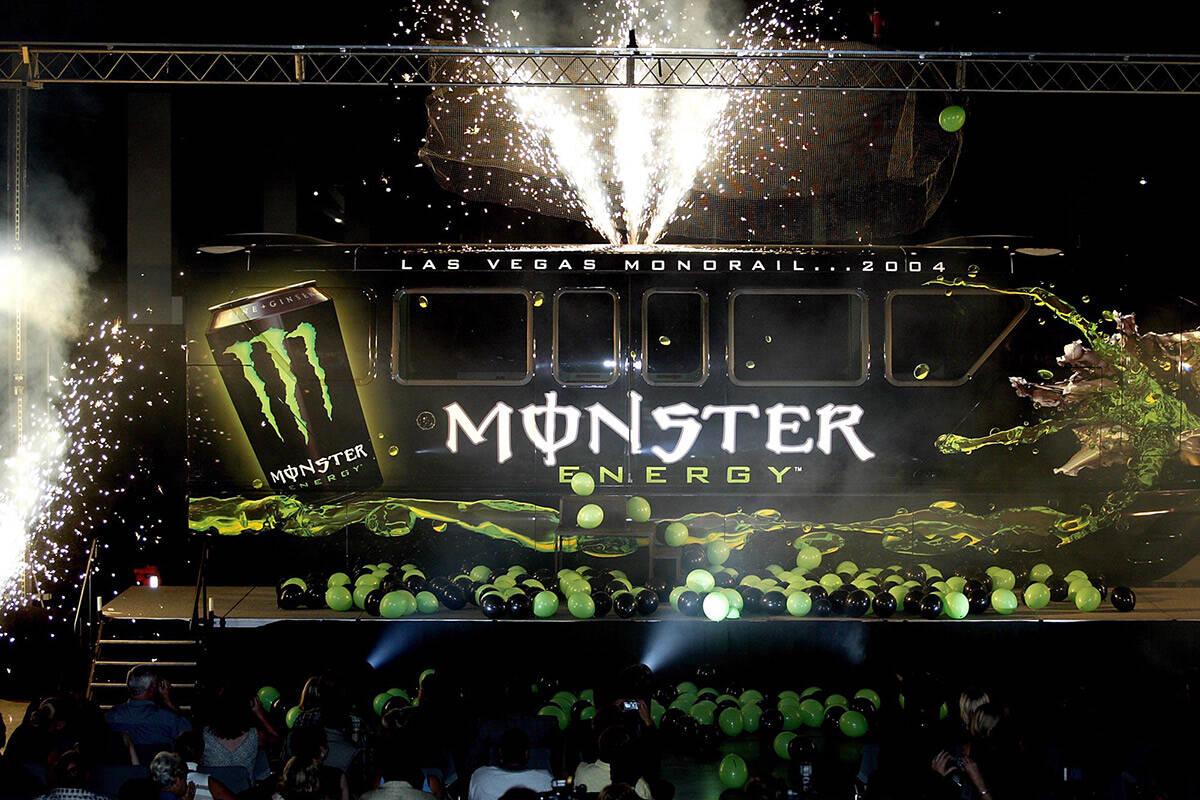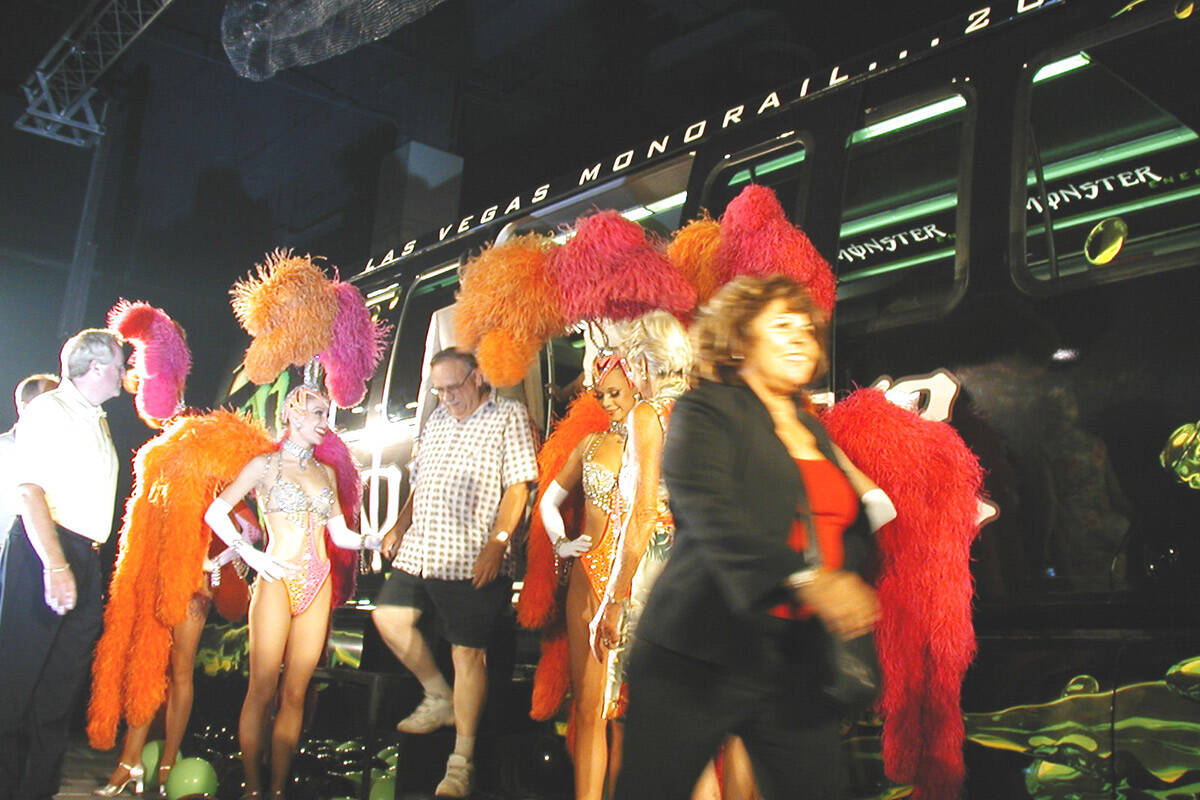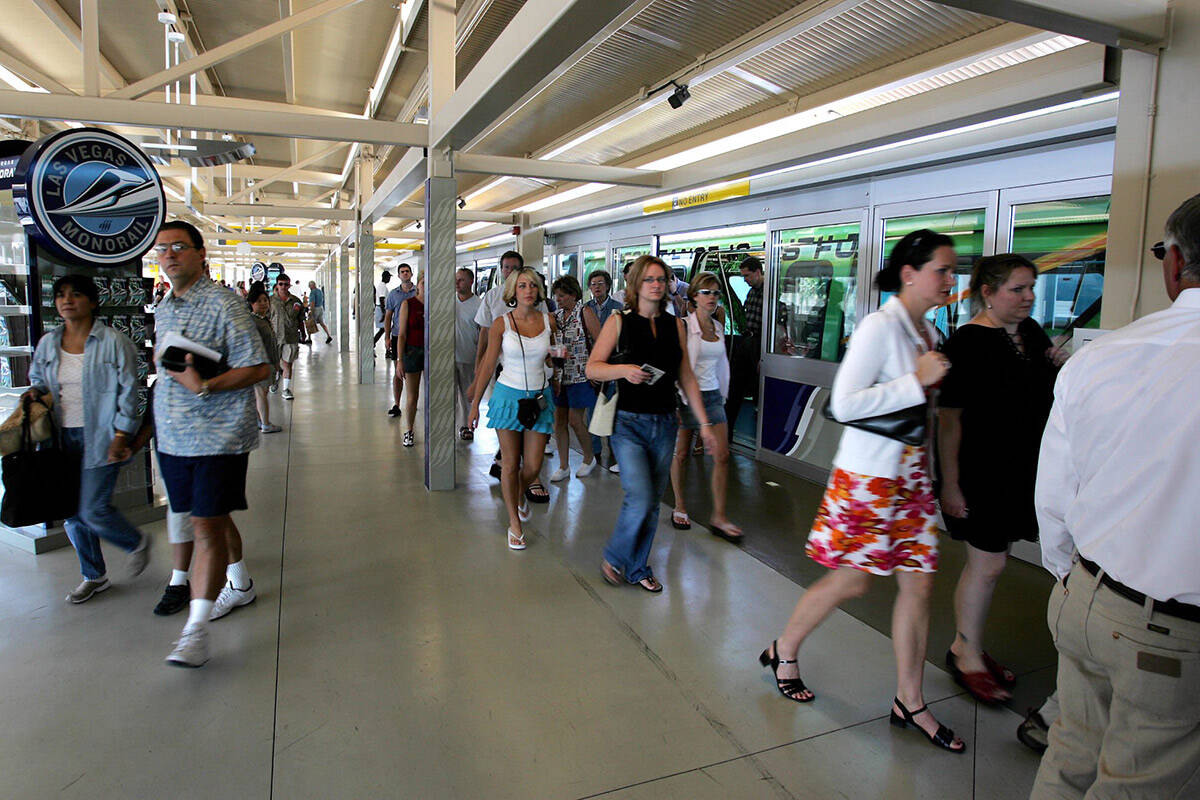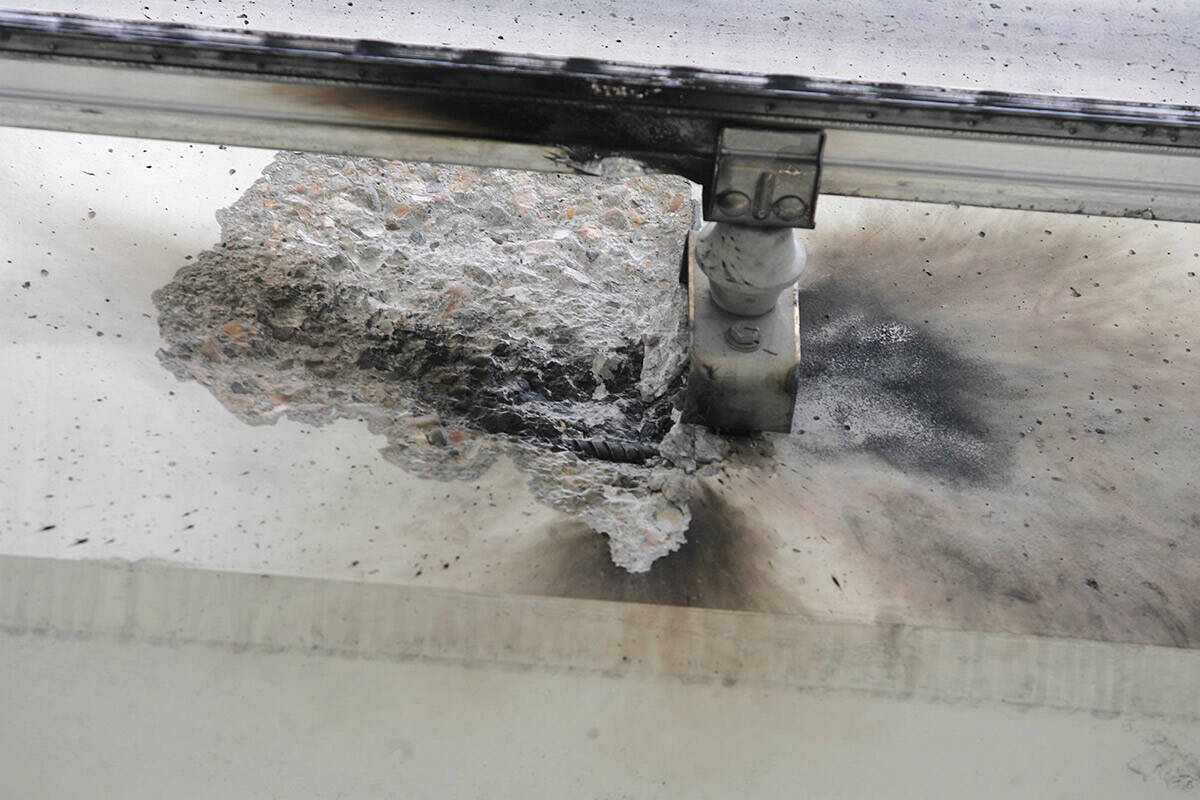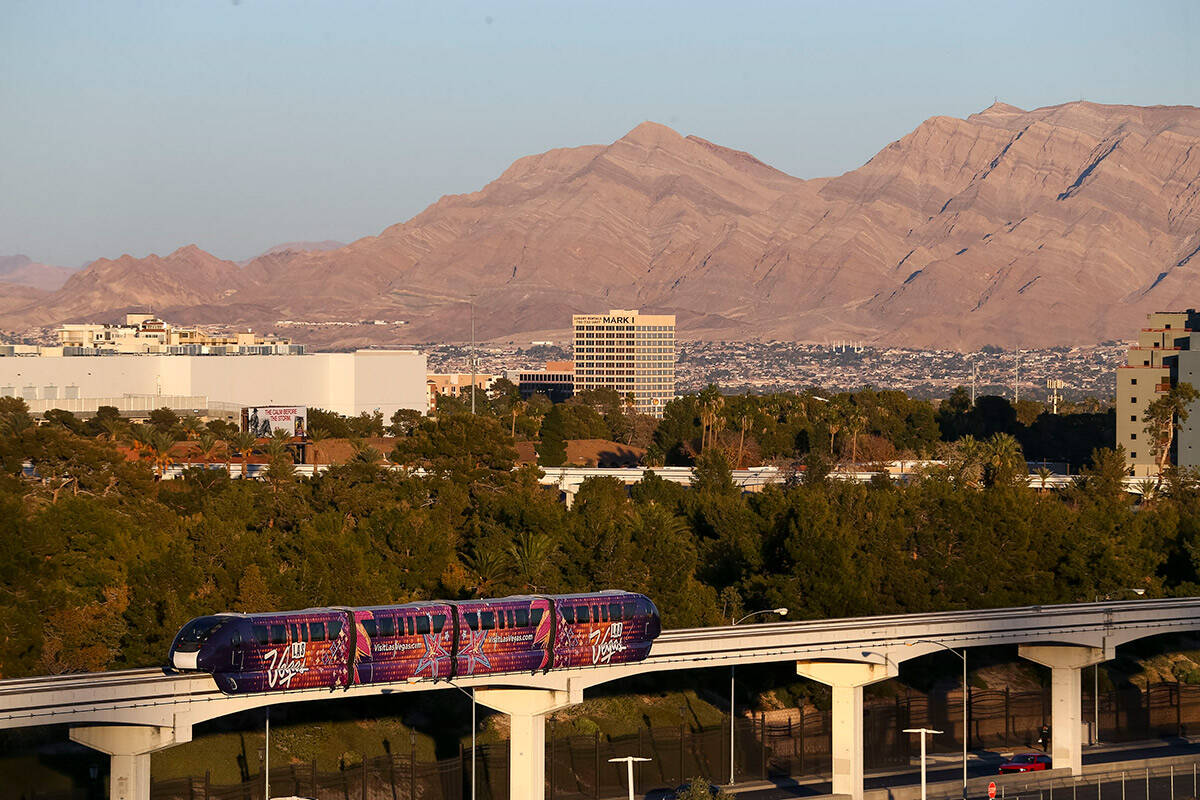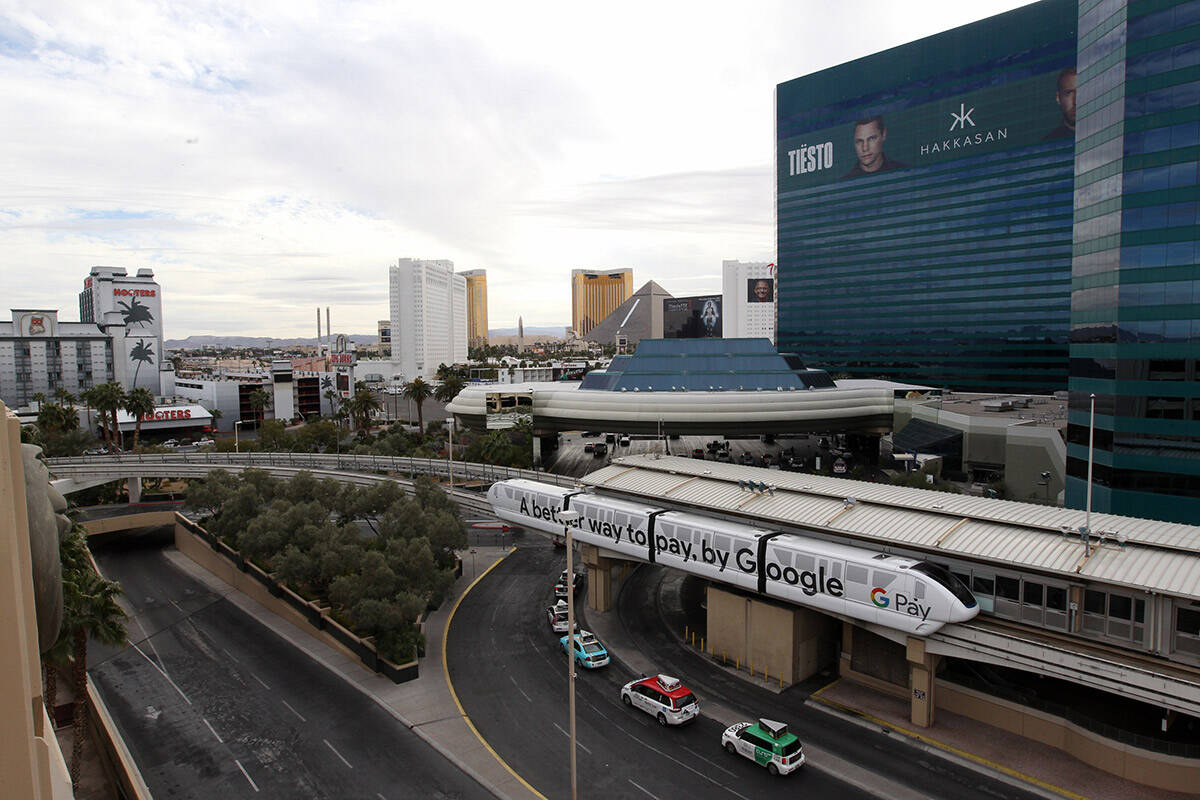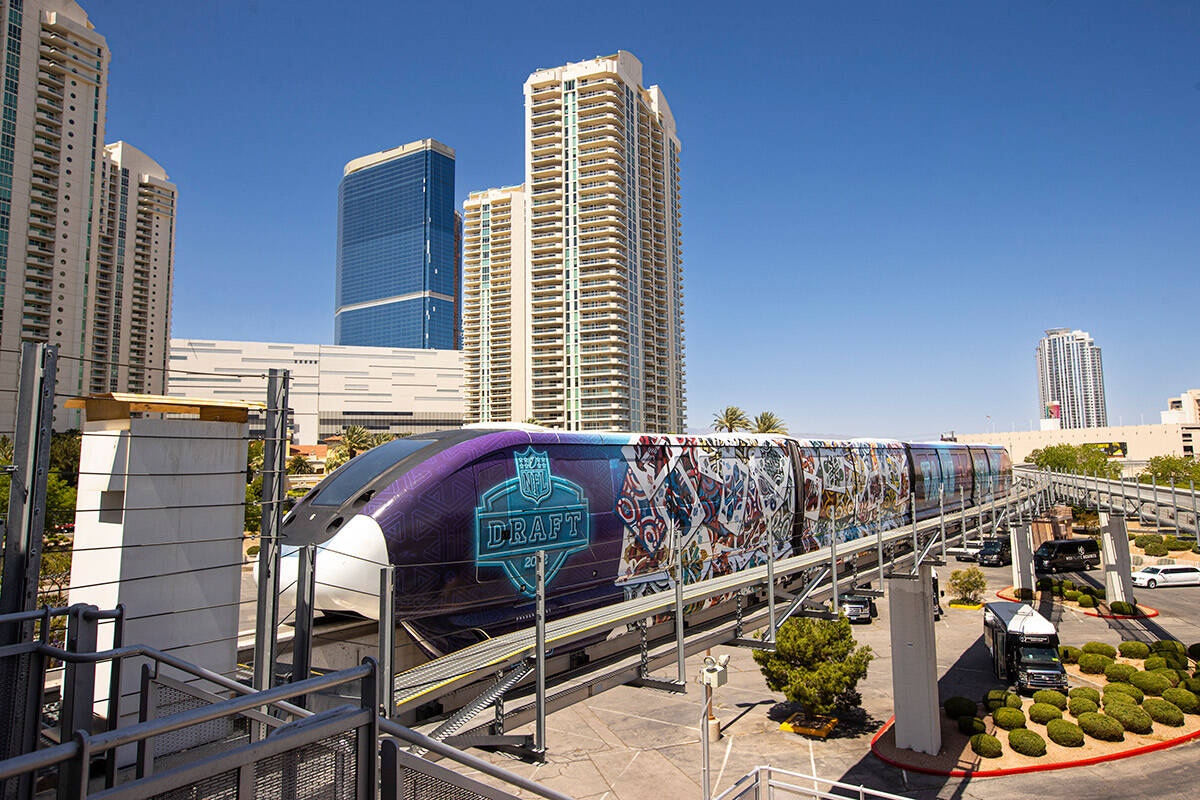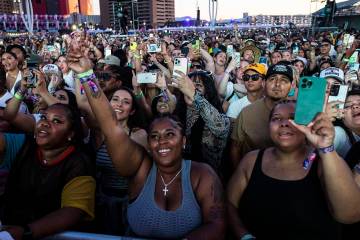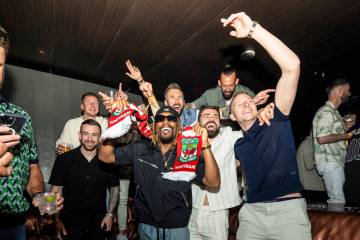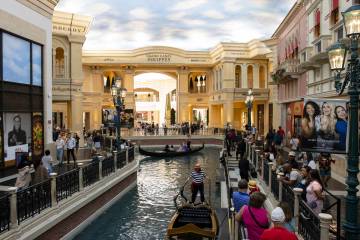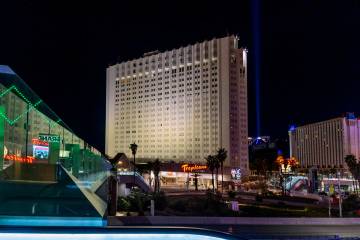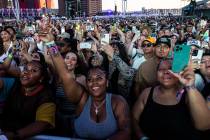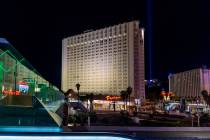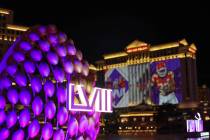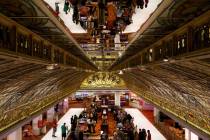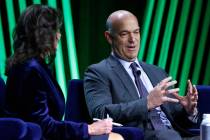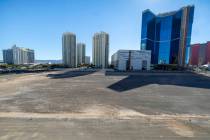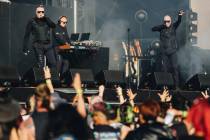The Las Vegas Monorail, from the ’90s to today — PHOTOS
In a city where the key to success is luck, the Las Vegas Monorail has been short on it since its inception.
The monorail began in 1993 as a joint venture project between MGM and Bally’s, and in 1995 the 1-mile track opened with Mark IV monorail trains from Walt Disney World.
On July 15, 2004, the extended, 3.9-mile, seven-stop monorail opened six months late with a $650 million price tag paid for with municipal bonds.
Eight weeks later, a metal piece fell off the drive shaft of a train and hit a power rail. A week prior, a wheel fell off a train and landed in a parking lot. The monorail was temporarily shut down, and Clark County officials ordered the monorail to conduct several weeks the close inspections and empty rail testing before allowing the rail to resume public operation.
The monorail lost $85,000 a day during the shutdown. It resumed operations in December the same year.
In 2010, Las Vegas Monorail filed for bankruptcy protection, with Las Vegas Monorail Chief Executive Officer Curtis Myles citing the Great Recession as a reason for a decline in revenue. Myles said in his court filing that while the monorail was able to use revenue to cover the monorail’s operations, it could never generate enough to cover its debt. It used money from its initial financing and debt service reserves from 2004 to continue operating, but eventually depleted those resources.
In May 2011, the Sahara closed, causing further impact to the monorail’s already declining ridership. However, the opening of the SLS Las Vegas in 2014 boosted ridership to pre-2012 levels.
Plans for two monorail stations by the MSG Sphere and Mandalay Bay were submitted to Clark County in 2018 that would have extended the monorail to 5 miles with nine stops, but were halted in 2020 due to the COVID-19 pandemic. The monorail also remained closed from March 2020 until May 2021.
During the monorail’s closure in 2020, the Las Vegas Convention and Visitors Authority purchased the monorail out of bankruptcy for $24.26 million and inherited its debt. The purchase of the monorail gave LVCVA control over a noncompete agreement that prohibited a competitor from entering the resort corridor on Las Vegas Boulevard, creating a path for the development of Elon Musk’s Boring Company’s Vegas Loop. The purchase was also made because the LVCVA needed a tranportation system to the Las Vegas Convention Center from the Strip.
LVCVA President and CEO Steve Hill told the LVCVA board of directors in 2020 that the monorail system could become obsolete within 10 years because the monorail train manufacturer no longer makes the train cars.
This year, the monorail saw success with the NFL draft in April as many fans opted to use monorail to travel along the Strip. For the 2022-23 fiscal year, LVCVA plans to spend $2 million to maintain both the Las Vegas Monorail and The Boring Co’s underground transit system out of its $398 million budget, with monorail expenditures paid for exlusively with fares.
Contact Taylor Lane at tlane@reviewjournal.com. Follow @tmflane on Twitter.



